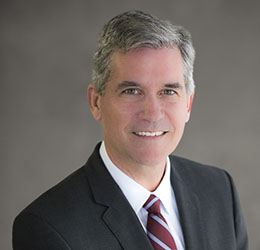Port of Oakland Director of Maritime John C. Driscoll has now been at his post for nearly a year. In this interview, he shares some of the lessons he’s learned so far and relates his vision for the future.

Port of Oakland Director of Maritime John C. Driscoll
By Patrick Burnson
Published: July, 2014
Port of Oakland Director of Maritime John C. Driscoll has now been at his post for nearly a year. In this interview, he shares some of the lessons he’s learned so far and relates his vision for the future.
Bay Crossings: We see a trend toward more regional port cooperation in the Puget Sound and San Pedro Bay. Will Oakland begin to work more closely with Bay Area ports in the future?
John Driscoll: The Port of Oakland will continue to collaborate with regional and statewide ports. A good example is related to the port security grant program. The Ports of Oakland, Richmond, San Francisco and Stockton are interdependent upon the same contiguous body of water. We worked together to develop a five-year plan to enhance maritime security in our region. Also, we are a member of the California Association of Port Authorities, an organization dedicated to maintaining California’s leading role in the maritime industry. Even though our ports are competitors, together we can be more effective in addressing issues of common interest such as infrastructure and port security funding, as well as in sharing the latest innovations on environmentally friendly technology to enhance our operations.
BC: Industry analysts suggest that the new G6 alliance may have a negative impact on Oakland. What assurances can you give shippers that enough direct inbound calls will be sustained?
Driscoll: We anticipate that as a result of these alliances we will see larger vessels in the 8,000 to 10,000 TEU range calling ports more frequently. We are big-ship ready with two mega-terminals, ample capacity, deep water at 50 feet and post-Panamax cranes. These alliances could actually bring us new cargo. The development of alliances is clearly a focused effort on the part of the shipping lines to consolidate business and reduce costs. Because the Port of Oakland has the capacity and infrastructure to handle bigger containerships, we are in a good position to establish new inbound service calls. We have already had ship calls at the Oakland seaport in the 14,000 TEU range. We can accommodate some of the largest vessels in the world with our existing facilities.
BC: Starting early next year, the resurrected U.S. carrier SeaLand will be coming back under the auspices of Maersk Line to serve the existing intra-Americas service network. Given your experience with both lines, will you be exploring the potential for more calls at Oakland?
Driscoll: We are definitely interested in growing more business volume and are looking at every opportunity to do that, including intra-Americas service. Not only do we have the capacity and infrastructure to build our maritime business, we have other advantages. The Port of Oakland has two Class I railroads, UP and BNSF, at the seaport which means efficient and convenient rail access to inland points in the United States. The other advantage the Port of Oakland has for intra-Americas goods movement is the Marine Highway between the Ports of Oakland and Stockton. This is an opportunity to move heavy cargo on the new barging service and avoid the over-the-road weight restrictions.
BC: With the Panama Canal expansion moving ahead on deadline, what changes may shippers expect in your operations?
Driscoll: I don’t think the percentage of cargo through the canal will change significantly. Some shippers may choose to take the slower route through the canal if they can find a way that works for them both financially and operationally. Import cargo favors inland point connections—so the West Coast will continue to attract imports.
At the Port of Oakland we will continue to move a lot of export cargo, in particular time-sensitive goods such as agricultural and reefer cargo. The Port of Oakland remains a strong, viable port of choice because of its proximity to Asia as well as some of the factors I’ve already discussed. We are already seeing some containerships at the Oakland seaport that are too large for the expanded Panama Canal to handle. Additionally, we reconfigured some of our terminals last year and created operationally the third-largest marine terminal on the U.S. West Coast. This enhances our ability to handle the trend toward larger containerships on the trans-Pacific routes.
Ultimately, beneficial cargo owners will be asking themselves some critical questions when considering moving their goods through the Panama Canal: Would the route through the Panama Canal require a beneficial cargo owner to provide significantly more inventory due to the longer amount of time the goods are on the water? Would more time on the water drive up supply chain costs due to more vessel fuel consumption? Will Gulf Coast and East Coast ports be able to finance and construct the infrastructure needed to support large import volumes?
Patrick Burnson is the past president and current board member of the Pacific Transportation Association, based in San Francisco. www.pacifictrans.org

